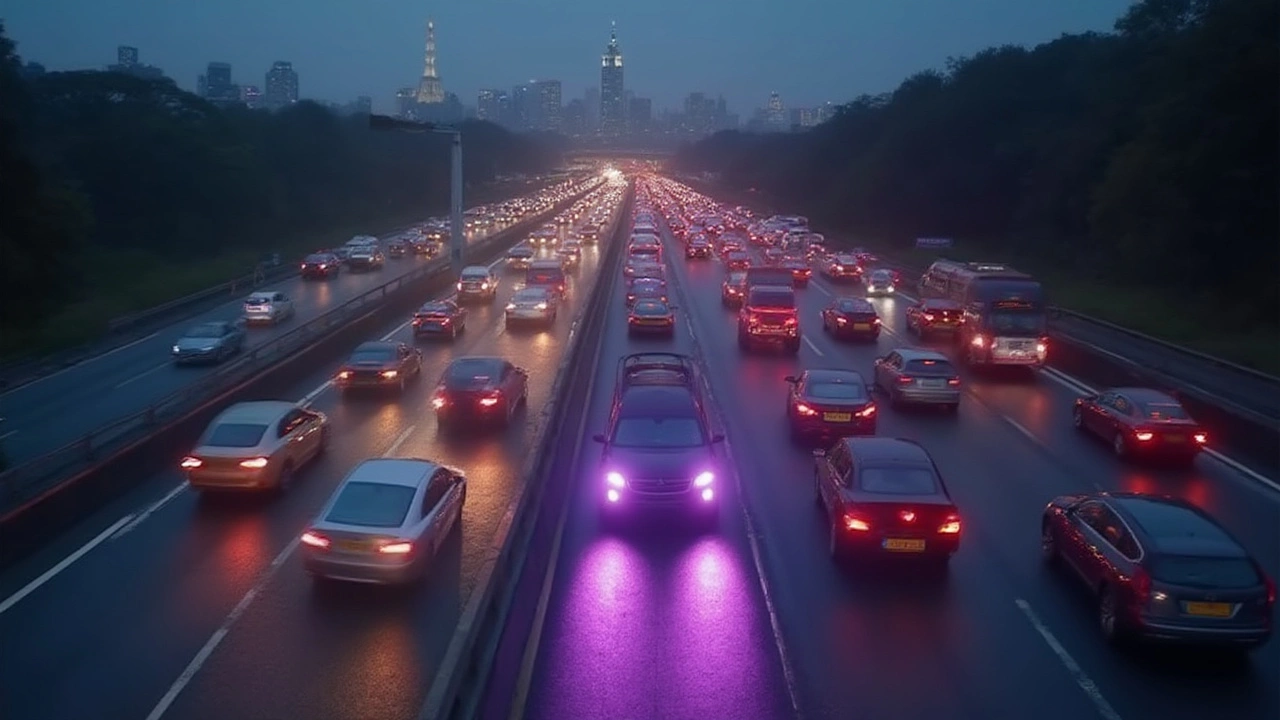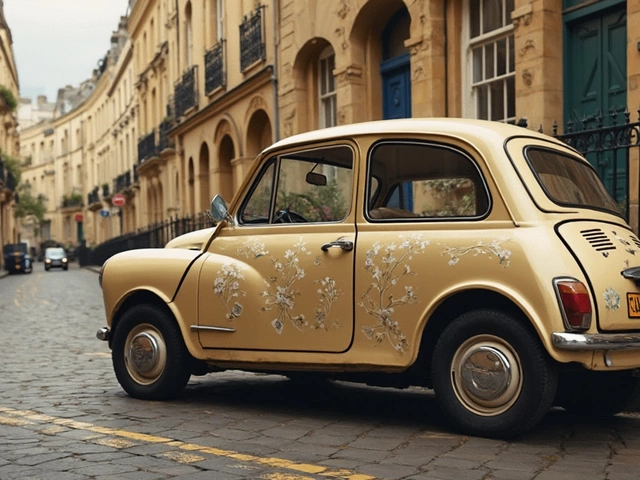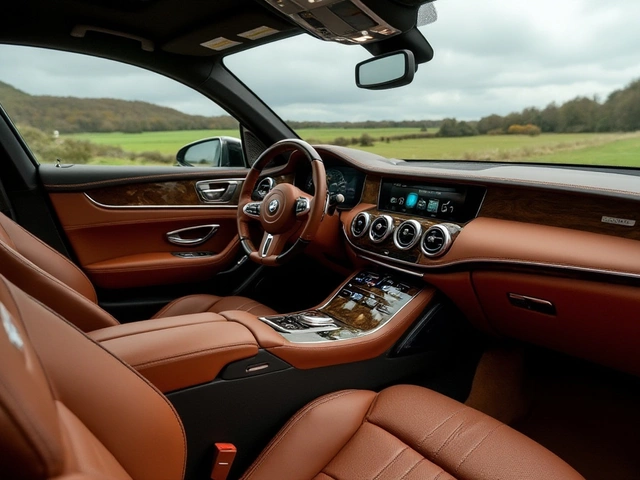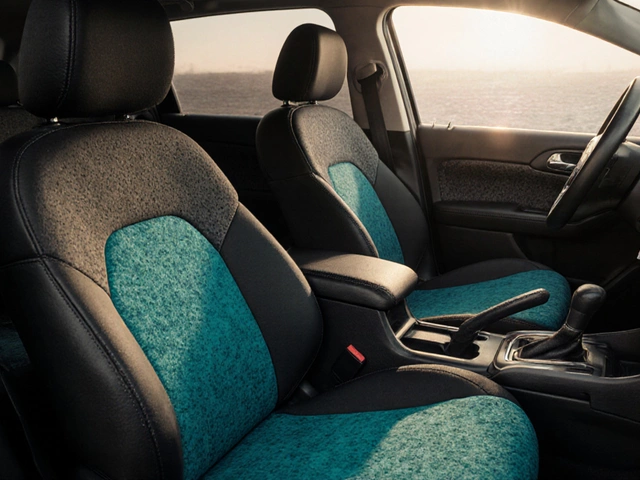Ever pulled up behind a car at night and noticed something weird about their headlights? Maybe they glowed with a wild purple tint, almost like something out of a sci-fi flick. They might look cool, and you may feel tempted to upgrade your own ride with colorful beams. But before you do, there’s a good reason you rarely see purple headlights on the road—and when you do, they usually belong to someone about to get a hefty ticket. Most drivers never learn the story behind these headlight laws, so let’s clear up the mystery.
What Makes Certain Headlight Colors Illegal?
The color of your headlights is way more than just a style choice. Think about it: you rely on those beams to see the road at night, spot deer before they leap, and even read signs or see pedestrians. Here's the thing—there are international guidelines set by groups like the United Nations Economic Commission for Europe (UNECE) and individual countries that dictate what color headlights must be. In the US, the Federal Motor Vehicle Safety Standards (FMVSS) say that practical headlights must emit either white or selective yellow light. Purple doesn’t make the cut.
The reason is actually pretty logical. Your eyes see certain colors better at night, especially at the edge of your vision. That’s why emergency vehicles stick to distinct colors—white, red, blue—or in some cases, amber. Purple, along with blue and green, isn’t easily picked up by your night vision. It can even make things worse by blending into city lights or just making objects seem weirdly colored and tough to recognize. The hue itself can change how your brain judges distance or shape. Imagine missing a turn because it looks farther away than it is—no thanks.
States set their own laws too, but almost every one sticks to white or yellow because law enforcement, pedestrians, and other drivers all rely on knowing what a headlight is when they see one. If just anyone could run purple or pink lights, chaos would reign. A 2022 study by the Insurance Institute for Highway Safety found that illegal headlight colors were linked to higher rates of late-night accidents, especially in tricky weather, because other drivers simply misjudged the oncoming traffic.
How Purple Headlights Impact Road Safety
If you’re thinking purple headlights just look fun and don’t actually harm anyone, here’s the thing: headlight color changes the whole driving experience—for you and everyone else on the road. Standard white headlights mimic daylight. Your eyes are hardwired for that spectrum, so you see the most detail, even when you’re tired. Purple light, though, bounces around more, making puddles harder to spot and sharp curves pop up out of nowhere. This isn’t just theory. Real-world crash reports have shown that drivers misjudge speed and distance with off-color headlights.
Now, imagine the effect on a foggy night. Yellow headlights have earned a rep for cutting through fog and rain because of their wavelength; purple, on the other hand, scatters too much, totally reducing visibility for everyone, including you. Glare gets worse, and if someone’s sensitive to color, it might even lead to temporary blindness—a real hazard. If someone’s heading toward you with purple lights, your eyes need an extra split second to figure out what’s coming, and at 60 mph, a split second is all it takes for a costly mistake.
Recent data from the National Highway Traffic Safety Administration (NHTSA) shows that collisions involving non-standard headlights often happen at intersections, or when making quick-nighttime decisions. These are the moments when a clear field of vision and instant recognition mean everything. Purple headlights can disrupt your focus, making it not just a legal issue but a genuine safety risk.
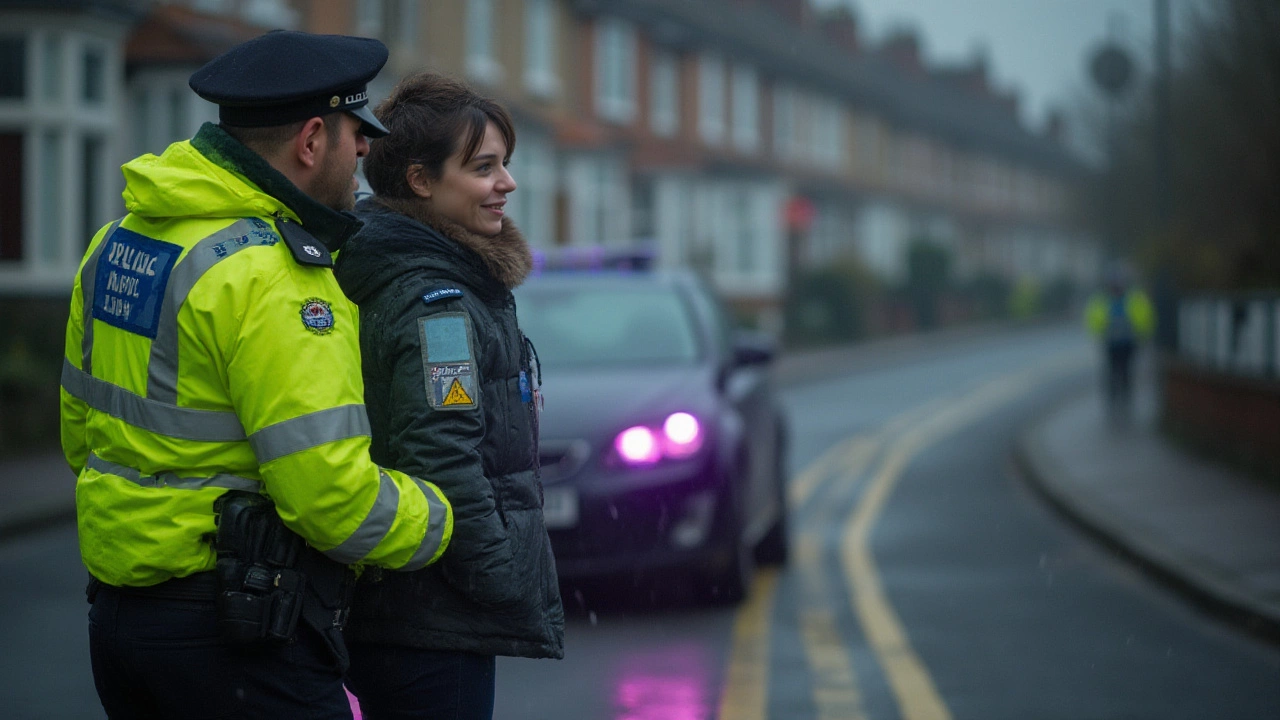
The Legal Side: What Happens If You Use Purple Headlights?
Get this—installing purple headlights isn’t just a minor offense. In most places, the law treats headlight color violations like driving without proper insurance: you’ll get pulled over, ticketed, and possibly have to pay hundreds in fines. Some states classify it under defective equipment, while others call it a public safety hazard. According to the American Automobile Association (AAA), fines can range from $50 to $300, and if you cause an accident, expect insurance hassles on top of that.
Here’s a quick breakdown of how states write their laws:
- California: Only white or amber for headlights, period.
- Texas: White only. Colored lamps (other than yellow for fog) are illegal.
- New York: Only white or amber allowed up front.
- Florida: You can use yellow fog lights but never purple headlights.
- Illinois: White and yellow only.
Even if your car just has a purple tint instead of a full-on purple beam, you can still get cited. Police are trained to spot these violations, and the fines add up if you don’t fix the issue. If your ride fails a state inspection—for example, in Virginia or North Carolina—you can’t legally drive it until you swap for compliant lights. To see how the fines stack up, take a look at this table of sample penalties (2024 data):
| State | Fine for Illegal Headlights |
|---|---|
| California | $197 |
| Texas | $210 |
| Florida | $158 |
| New York | $150 |
| Illinois | $120 |
Busted with a second offense? Some states tack on points to your license, and in rare cases, they’ll even impound your car until you fix the lighting.
The Science Behind Headlight Color and Visibility
There’s real science behind restrictive headlight laws. The human eye isn’t equally sensitive to every color, especially at dusk or in darkness. White light includes all visible wavelengths, which means you can see reds, greens, and blues clearly. Purple light is all the way at the end of the spectrum, where sensitivity bottoms out for most people. Peer-reviewed studies from as early as 2000 (see work by the Society of Automotive Engineers) prove that reaction times are shortest with white lamps—about 18% slower with blue or purple-tinted beams.
Another overlooked thing: purple light makes street signs and road markings look odd, especially reflective paint. Those white stripes marking the stop line? Under a purple hue, they look washed-out and sometimes even reflect a different color, so drivers tend to overshoot the line. It’s not just your issue—everybody on that stretch of road suddenly has to work harder just to do basic things.
And there’s the technical side, too. Modern headlight housings and reflectors are engineered to boost the visibility of white or yellow beams. Swap in a purple LED, and you risk creating dark spots right in front of your hood. These dead zones aren’t just an aesthetic choice—they’re a hazard when you least expect it.
Here are a few points experts bring up:
- White light offers the sharpest contrast for obstacles.
- Purple light scatters more, boosting glare and eye strain.
- Emergency vehicles use red, blue, and white for a reason—those hues instantly say “pay attention.”
- “Daylight white” LEDs score best on driver safety tests by the IIHS.
You may spot aftermarket bulbs that claim “legal purple tint,” but that label often means they only look purple in the housing, not on the road—true purple beams almost always break local codes.
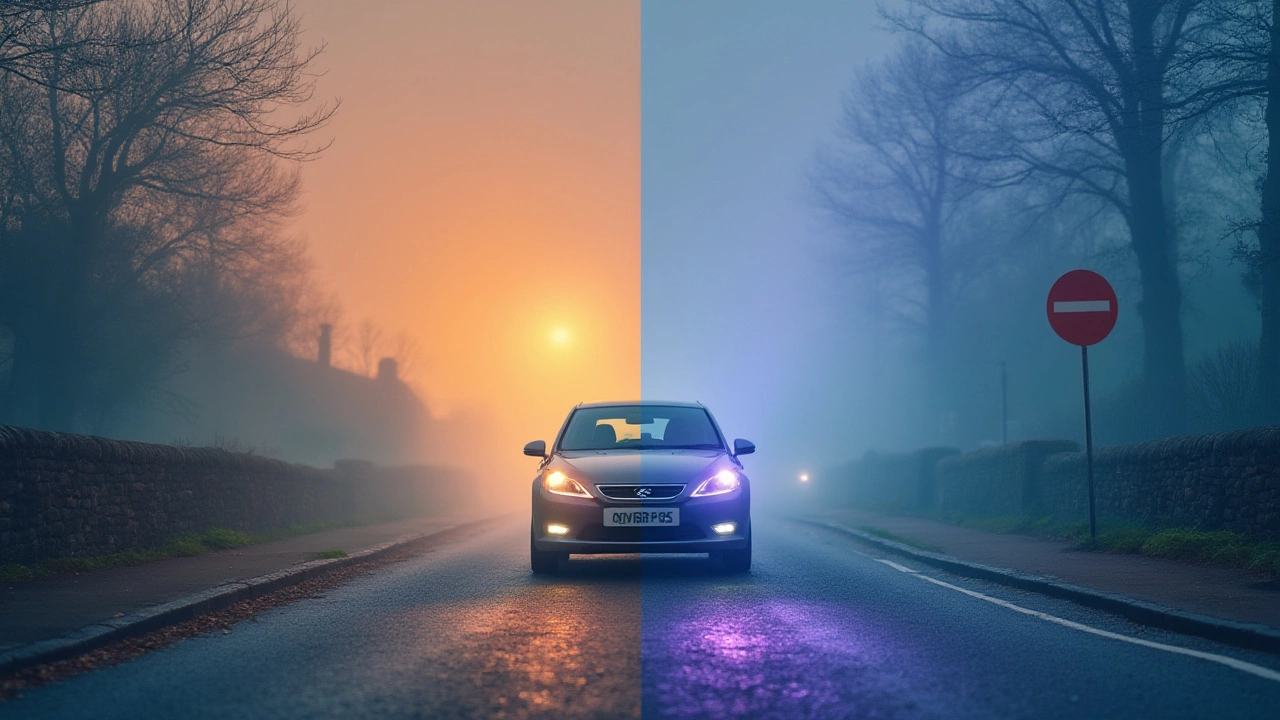
Tips for Customizing Your Headlights Legally
Sure, standing out is cool—but staying street-legal saves you tons of hassle. If your goal is to upgrade your headlights for looks and function, stick with DOT-approved bulbs. The U.S. Department of Transportation mark means they’re safe and legal for road use. Choose “cool white” LED bulbs if you want a modern look—these often have a slight bluish hue but remain compliant.
If you want your car to pop, try changing your daytime running lights (DRLs) or installing interior ambient lighting instead. Many states allow color-changing lights inside the car, as long as they don’t shine out the windows. Ground-effect LEDs under the chassis look flashy at shows but must be turned off while you’re driving. If you must have color, go wild with accent LEDs that turn off automatically when the car’s in motion.
When it comes to fog lights, go for legal yellow bulbs. They stand out in bad weather but won’t get you a citation. And if you buy a set of aftermarket headlights, check the packaging—look for official certifications like “SAE-compliant.” If your supplier promises a “universal fit” or “show only,” steer clear for street use.
Don’t forget to double-check your state’s rules. Here are some handy tips for staying on the right side of the law:
- Stick to white or yellow bulbs for headlights.
- Keep receipts for new lighting in case a cop asks.
- Install accent colors ONLY on private property or at meets.
- Swap back to stock bulbs before inspection time rolls around.
- Call your local DMV if you’re unsure—better safe than sorry.
If you ever get pulled over, stay cool and polite. Officers usually appreciate honesty, and showing proof you’re fixing the issue can sometimes turn a big fine into a warning. And always remember: a little less purple is a whole lot safer and wallet-friendly.
So, while the idea of glowing purple headlights might feel rebellious, the reality is—they’re banned for a reason. Laws and science agree: stick to white or yellow to keep your ride looking sharp and everyone on the road safe. If standing out matters, there are plenty of clever, legal tweaks that don’t mess with visibility or your pocketbook. Play it smart, keep your headlights bright, and when it comes to color—less is definitely more.

